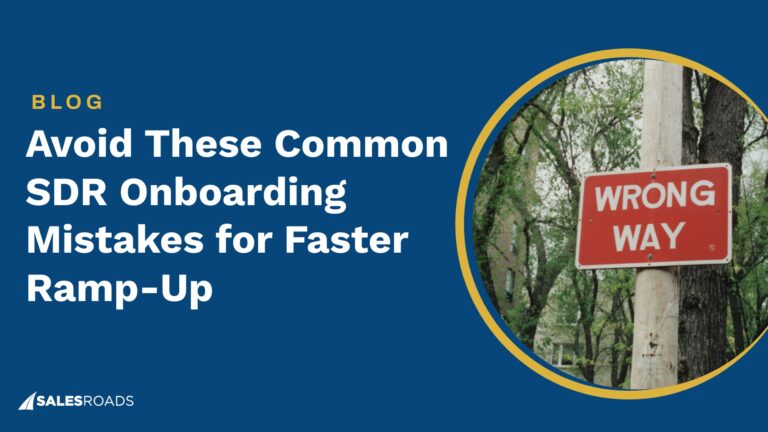Facing a sales decline can feel overwhelming, and for good reason. It shakes confidence, puts pressure on teams, and creates uncertainty about the next move. But rather than panic or chase quick fixes, this moment offers a vital opportunity: to pause, step back, and methodically uncover what’s really causing the drop.
Root cause analysis is a leadership mindset. It challenges you to dig beneath the surface symptoms, ask the tough questions, and find the real issues hidden beneath the numbers.
When done right, it reveals clear paths to reverse the decline and build a stronger, more resilient sales operation.
What Is Root Cause Analysis in Sales?
Root cause analysis is a structured problem-solving approach used to identify the underlying reasons behind an issue, in this case, declining sales performance.
Instead of jumping to conclusions or applying surface-level fixes, root cause analysis helps sales leaders dig deeper to uncover what’s truly driving the downturn.
McKinsey reports that organizations leveraging data effectively are five times more likely to accelerate decision-making and three times more likely to enhance the quality of those decisions. But only 23% of CEOs consistently incorporate data-driven insights into their strategic choices.
A dip in revenue might seem like a result of poor lead quality, but is that the real problem, or just a symptom? This analysis equips teams to investigate further, asking pointed questions and analyzing data until they reach the foundational cause of the decline. Only then can meaningful, lasting corrective actions be taken.
By embedding root cause analysis into your leadership approach, you gain clarity, prevent recurring issues, and make smarter decisions that lead to sustainable sales growth.
Recognizing the Warning Signs of a Sales Decline
Before you can fix a sales decline, you need to spot it early and know what you’re really looking at.
Declines don’t always start with missed quotas. Often, they begin subtly, through shifts in both numbers and behavior. Recognizing the early warning signs gives sales leaders the opportunity to act before a small dip becomes a major problem.
Quantitative Signals
These are the objective metrics that indicate something’s off in your sales performance:
- Drop in revenue: One of the most obvious red flags. If you’re missing targets consistently, it’s time to investigate.
- Lower sales close rate: If you’re closing fewer deals than usual, even with the same lead volume, there may be a problem with sales execution or deal qualification.
- Decreased pipeline volume: A shrinking or stagnant pipeline can point to issues with prospecting, marketing alignment, or lead generation.
- Fewer inbound inquiries or demos booked: These could signal weakening demand or a need to adjust messaging and outreach strategies.
- Short-term deals increasing: A sudden shift to smaller or short-term deals may be an early sign of value perception or pricing issues.
Qualitative Red Flags
Numbers tell one part of the story. The other half often comes from people:
- Low rep morale: A team that’s disengaged, frustrated, or burned out is less likely to perform at a high level. Look for drops in energy or ownership during meetings and calls.
- Increased discounting: If reps are leaning heavily on discounts to close deals, it may indicate poor positioning, competitive pressure, or weakened perceived value.
- Longer sales cycles: Extended timelines can reflect indecision, poor fit, or reps struggling to move deals forward confidently.
- Poor sales forecast accuracy: If what your reps forecast rarely matches actual results, you may have process or qualification issues or a team under pressure to inflate projections.
- Customer feedback changes: Rising complaints, churn, or confusion from prospects can highlight issues upstream in the sales process or misalignment between product and promise.
Being proactive means paying attention to both data trends and frontline feedback. When you catch these warning signs early, you give yourself more time and flexibility to respond strategically.
Step-by-Step Guide to Performing Root Cause Analysis
When sales start to decline, a systematic approach is essential to uncover the true underlying issues. Root cause analysis offers sales leaders a clear framework to dissect problems, supported by data and thoughtful inquiry.
Here’s how you can conduct an effective analysis to diagnose and reverse a sales slump.
1. Gather and Segment Your Sales Data
Begin by collecting a wide range of sales-related data.
This includes CRM reports on deal progress and outcomes, activity logs that detail rep engagement, funnel metrics showing conversion rates at various stages, and feedback from customers regarding satisfaction or concerns.
However, raw data alone isn’t enough.
Segment your analysis by different dimensions such as sales teams, territories, product lines, customer verticals, or deal sizes. Doing so helps identify specific pockets where the decline is most severe.
This granular view prevents assumptions and focuses attention on the precise areas needing intervention.
2. Identify Where the Drop Is Happening
With segmented data, the next step is to localize the problem within your sales funnel.
Is the challenge emerging at the top of the funnel, where lead generation happens? Perhaps fewer leads are entering the pipeline or their quality has decreased. If the middle of the funnel shows weaknesses, it could mean prospects are failing to advance due to ineffective qualification or nurturing.
Alternatively, if the bottom of the funnel is stalling, pricing objections or competitive pressures might be blocking deal closures.
Focusing on the funnel stage where the biggest drop occurs allows you to tailor your investigation and corrective actions with precision.
3. Ask the Right Questions
Numbers can reveal trends, but to fully understand root causes, leaders need to dig deeper by asking critical questions:
Are We Targeting the Wrong ICP?
Market dynamics can shift, and your ICP might no longer align with the current opportunity landscape. Are your prospects the right fit, or has their profile evolved?
Have Market Conditions Shifted?
External factors like new competitors, economic downturns, or changing buyer behaviors can drastically impact sales. It’s essential to evaluate how these dynamics might be influencing your results.
Is There Misalignment Between Marketing and Sales?
Miscommunication or differing priorities between marketing and sales teams often create friction that affects lead quality and handoff processes. Are the messaging and expectations aligned across these groups?
Research shows that organizations where sales and marketing are tightly aligned experience 24% faster revenue growth, demonstrating the power of shared goals and messaging.

Has the Team’s Messaging Changed?
Even subtle shifts in how sales reps communicate value propositions can confuse prospects or diminish credibility. Assess whether recent changes in messaging or sales tactics might be causing pushback or disengagement.
Common Root Causes Behind Sales Declines
While each company’s situation is unique, several root causes frequently appear across industries.
Here are some of the most common, and impactful, drivers of falling sales performance:
Ineffective Prospecting or Poor Lead Quality
One of the primary reasons for declining sales is a breakdown in prospecting.
If your sales team is targeting the wrong customers or if lead quality diminishes, the pipeline will suffer. This could happen if marketing and sales aren’t aligned on the ICP, resulting in poor-fit leads that rarely convert.
Additionally, relying too heavily on outdated lead sources or neglecting proactive outreach can starve the funnel of qualified opportunities.
Without a steady stream of well-qualified prospects, closing deals becomes increasingly difficult.
Reps Not Following the Sales Process
Sales processes exist to create consistency and predictability in outcomes. When reps skip steps, cut corners, or follow their own informal methods, sales results often suffer.
This can include failing to properly qualify leads, neglecting to address key buyer concerns, or rushing deals prematurely. Deviations from the proven sales methodology can create inefficiencies, lost opportunities, and weak buyer trust.
Inconsistent process adherence also makes it difficult for managers to forecast accurately and coach effectively.
Inadequate Training or Product Knowledge Gaps
Even the best sales processes fail if reps don’t fully understand the product or lack the skills to communicate its value. Training deficiencies, whether in onboarding new reps or continuous skill development, lead to poor objection handling, weak presentations, and ineffective negotiation.
According to research, companies that prioritize training are 57% more effective than their competitors.

This statistic underscores the importance of investing in training to enhance sales effectiveness, aligning with this approach of addressing root causes to improve sales performance.
Product knowledge gaps, on the other hand, cause reps to miss upsell or cross-sell opportunities and can erode credibility with prospects. Investing in ongoing learning and certifications is essential to keep the team sharp and competitive.
Market or Competitive Shifts
Sometimes declining sales aren’t caused by internal faults but by changes in the market landscape.
New competitors entering the space, shifts in customer preferences, economic downturns, or emerging technologies can disrupt sales momentum.
If your offering no longer aligns with evolving buyer needs, or if competitors provide stronger value or pricing, you may see a drop in conversions and deal sizes. Staying informed and agile is key to adapting sales strategies to these external forces.
Inadequate Sales Enablement and Tools
The tools and resources available to sales reps can either accelerate or hinder performance.
Outdated CRM systems, lack of access to current content and case studies, or insufficient sales automation slows down reps and reduces effectiveness.
Without proper enablement strategy, reps spend more time on administrative tasks and less time engaging buyers. Investing in modern sales enablement technology and ensuring easy access to training materials helps reps stay productive and aligned.
Pricing and Value Proposition Issues
If the pricing strategy is out of step with the market or the value proposition is unclear, prospects may hesitate or turn to competitors. Sales decline can result from discounts becoming the default close tactic, signaling a lack of confidence in the product’s worth.
This often ties back to messaging, competitive positioning, and how well the sales team articulates benefits tailored to buyer pain points. Revisiting pricing models and sharpening value communication are crucial corrective steps.
Bottom Line
Remember, sales declines rarely happen overnight or for a single reason. They’re often the result of multiple small cracks building up unnoticed. By embracing root cause analysis, you equip yourself to not only patch those cracks but to build a stronger foundation that supports sustainable growth.
Your willingness to pause, investigate, and act strategically sets you apart as a leader. So the next time sales dip, don’t panic. Lean into the analysis, involve your team, and turn insights into meaningful change.
That’s how you reverse a decline and how you build resilience that lasts.











